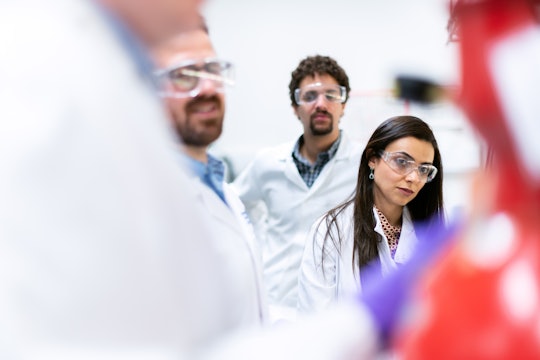Women scientists are bearing the brunt of COVID-19's impacts
International Day of Women and Girls in Science 2021 marks countless setbacks for the science world
During the International Day of Women and Girls in Science, it should behoove all of us to remember the difficult climb of a career in STEM.
This is especially so in academia, and especially so for academics in the midst of the COVID-19 pandemic. I am no stranger to this: I finished my doctoral program at University of Illinois at Chicago in December 2019, a few months before the pandemic shuttered the world in March 2020. And I am lucky — I have been working my position as a director of a STEM program for a large nonprofit for years now, and my job is secure. I’m doubly lucky, as I also have a small child at home, but her tiny preschool is open (with a mask mandate), allowing my husband and me to avoid the concerns that millions of working-age women have right now: eight hours of guaranteed childcare a day. I daresay I'm triply lucky, as my career is in informal science education, and if my three-year-old comes along for a day, there's a good chance it's because I will be in the woods, at a festival, or at another place where a small child and her working mother will be welcome.
This triple home-run of parenting luck doesn't exist for the vast majority of my female colleagues in academia and laboratory science. They are juggling childcare, writing, and work, usually all from the same space within their homes.
For many of my friends who were seeking jobs right after graduation, or a transition into a new career, this has been a devastating year. This is especially true for women, who are often the caretakers in their house, whether it is a small child, elderly relatives, or even their siblings. Society expects them to bear the emotional labor of caretaking. It's not wholesome; it's insidious by nature. For many professional and academic women reading this, who is more likely to have to remember such functions as birthdays in the lab, ordering lunch during a crunch time, or organizing social events?
It is not a secret that women face harassment and barriers within STEM: I faced it as a first-year doctoral student, from my female advisor, no less. The harassment of women in STEM and academia came to an especially ugly head in 2020, with the breaking stories of BethAnn McLaughlin’s nasty treatment of her fellow STEM advocates, many of whom were women and/or early-career scientists. When paired with the high amounts of unemployment in academia, the ongoing harassment and barriers, and the societal expectations of women as caregivers before all other roles, the horizon of hope for women and girls within STEM seems to stay within the dark, rather than offer any beacons of hope.
As the COVID-19 pandemic reaches almost a year within the United States, it is clear that those who have suffered the most are working mothers, as well as beginning academics. For those who are in the middle of this unfortunate Venn diagram, the recently graduated scholars who happen to be mothers, this misfortune is especially telling. Many of the science careers outside of academic research — such as museums, informal science institutions, and government positions — have also been cut, if not completely eliminated. Sadly, there are few exceptions and alternatives at this time.
Will this generation of women in STEM ever recover from the setback? I do not have the answer. I do know that for those of us who graduated during the Great Recession, a decade ago, most of us will never make up the lost years of pay and experience that our slightly older, or slightly younger, peers have enjoyed. This, I fear, will be the same story for many women and girls within STEM during this harrowing time in our history.

